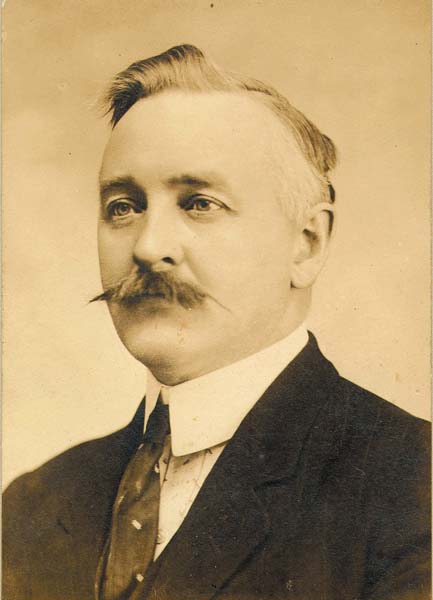
James Petrie Chalmers, Pioneer of Vision
Who was James Petrie Chalmers, a man indicated in reports reaching Moya McDonald to have played a key role in the early film industry? He was not an actor, nor a director nor a movie mogul, but when word of his significance, possibly a member of the Orkney diaspora, came to the Scottish Screen Archive she set off in search of a man now known to have been born the son of a crofter at Tankerness near Kirkwall in 1866.
She found that that he was the eldest of four children and reports suggest he rescued one of his two sisters who fell into the fire in their home when he was only five. Aged thirteen, Chalmers began a seven-year apprenticeship as a printer-compositor at the Orkney Herald, a paper which existed from 1860 to 1961. When qualified he emigrated to the USA.
A small bursary enabled Moya to travel to the USA and visit the New York State records office at Albany where she found no trace of him in the 1880s passenger records or even in any census, but a business directory located him again as a printer-compositor in New York City in 1890.
Photography caught his imagination and he was soon involved in the production of photographic magazines at the time when George Eastman was developing roll film and the Kodak Box Brownie.
The coming of the motion picture was to further inspire him and in March 1907 he launched what would be his life’s achievement, “The Moving Picture World,” the film industry's first independent trade journal. It covered all aspects of the cinema business, from the choice of seats and flooring to the latest projector or movie camera, highlighting all new inventions, safety standards and reviewing new films, therefore allowing access to information for the whole industry and rallying against fraud and monopolies.12,000 copies of the first issue were printed – and within a week, they were all sold.
At this time the fledgling industry was being pressured on two sides; by those who saw it as corrupt and an attack on morals, and those who wished to monopolise and control it. Chalmers took on both by fighting the corner for an independent industry of quality and a tool for education. Inventor and businessman Thomas Edison, through his film companies, used patent law effectively against many business rivals and tried to intimidate Chalmers into only working for his interests, which he refused to do. This put great pressure on his magazine through lost business revenue from Edison. This ended when Carl Laemmle, founder of Universal Studios, challenged Edison's monopoly in court and resulted in Chalmers taking on Views and Film Index magazine from Edison. This meant that Moving Picture World became an industry powerhouse and maintaining its independence from the film studios.
Its reviews illustrate the standards and tastes of film in its infancy, and shed light on story content in those early days. Offices had been opened in Chicago and Los Angeles, and two more Orcadians had joined the staff: his cousin John Wylie had become the paper’s business manager and his sister Eliza Jane the treasurer. In 1914, it had a reported circulation of approximately 15,000, but by that time Chalmers was gone, for while attending an annual film convention at Dayton Ohio in 1912 he went to find the projection room and mistakenly opened the wrong door and fell to his death down a lift-shaft. His family continued publication so as to honour his memory until 1927 when it merged with the Exhibitor's Herald, and in 1931 a subsequent merger with the Motion Picture News occurred, creating the Motion Picture Herald.[6]
Many leading figures from the film industry attended his New York funeral, which was filmed by Gaumont and Pathé News. Hundreds of tributes from across America and from abroad poured in to the magazine, and a large number of floral tributes were sent, while his death was reported on the front page of the New York Times. Moya found Chalmers’s grave in New York’s Kensico cemetery in the Valhalla district where he lies alongside the likes of Rachmaninoff and Anne Bancroft. He was forgotten in Orkney where he had left nothing behind, and the first cinema there opened two years after his death. Indeed so early was his influence that his lifetime preceded even Charlie Chaplin’s debut, but Moving Picture World became the voice of the fledgling industry in those silent days and set the scene for the vibrant film-making community that would emerge in Hollywood, far from the controlling influence of establishment figures like Edison.